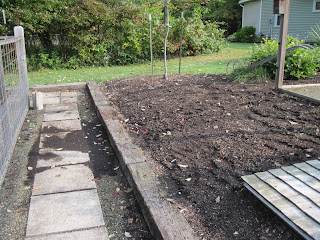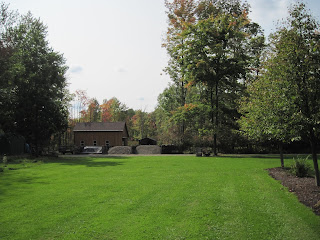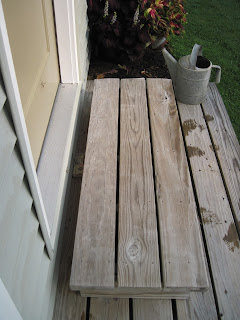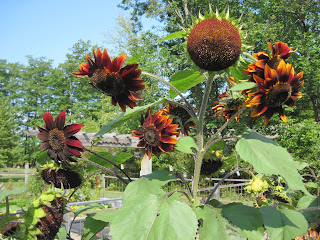We spend a lot of time, planning and money trying to keep our garden and landscaping "Low or No Maintenance" You can probably guess that there is no such thing as No Maintenance. Anyone with a gravel driveway knows that if you were to turn your back on a driveway for a year or two you would end up with a lawn instead. Every leaf that decomposes and every twig that gets pulverized into the gravel is creating soil and where you have soil you will certainly have weeds. Heck weeds grow quite happily hydroponically in gravel with no soil whatsoever. But allowing soil into your gravel is just an invitation of LOTS of weeds.
With our garden being surrounded by gravel and paver pads, we enjoy very low maintenance. With raised beds there is no tilling, very little weeding and in my garden I can easily do half of my chores in my office clothes. Which comes in handy when I need to skip out the garden in the morning and pick some lettuce for lunch.
About twice a year we have to have a day of maintenance, usually straightening frost heaved posts and/or pavers, replenishing gravel and mending fences and patios. Then every once in a while you get Mother Nature surprising you with an extra day of maintenance. When the remnants of Hurricane Irma arrived here at 2 a.m. Thursday morning, she dumped three inches of rain in pretty short order. That resulted in the bank, which recently had all of the summer squash plants pulled out, washing down into the walkway. This will happen now and then on a small scale, but this week we got it in large scale.
 |
| Surprise! |
Believe it or not, a shop vac will remove a decent amount of mulch from gravel without sucking up the heavier gravel. But this was a lot more than the shop vac would have been able to handle. But it really wasn't a disaster of epic proportions. We always have pile or two of gravel on hand. It's best to just shovel out all of the contaminated gravel, use that for "clean fill" elsewhere, and put in some fresh gravel.
 |
The bunkers nearby store mulch, bank run
and pea gravel for projects throughout the year |
And hour later things were back to normal and even looked better than normal with fresh clean, perfectly swept gravel.
I cut into the bank to give a little edge to stop regular runoff from cascading over the RR ties and raked everything smooth again.
Speaking of constant maintenance - another challenge is keeping the destructive little chipmunk varmints in check. Last year I killed fourteen. This year I've killed ten so far, and the next door neighbor caught his ninth one this morning. If you have a big problem with chipmunks, the key to trapping them is to find out where they like to run and putting a good heavy snap trap in their path. In this case, they love to run behind this step close to the chicken coop. So that's where I leave a trap. You can see it tucked in there behind the step in the shadow.

Chipmunks are awful cute and cheery and I hate to have to kill them all the time, but they are so destructive. Not only will they eat every last strawberry, despite the strawberries being protected by a secure cage of 1 inch square woven wire - which the little buggers squeeze right through - but they will undermine and kill your shrubs and ruin your house. There is absolutely nothing more aggravating than laying cozily in bed on a wintery Sunday morning, listening to a G-d D---d chipmunk gnaw on his breakfast in the crawlspace under the bedroom. And who know s what else he's gnawing on before he goes back to bed in the insulation he's pulled down and rearranged. So chipmunk control is another item of constant maintenance.
I'm slowly going through and pulling out spent plants getting ready for autumn.
I'm potting up things I want to over-winter for next year.
Spikes and vinca vine are fairly easy to keep alive and well.
The Nasturtium are looking gorgeous
 |
| Sunflowers |
 |
Red Fountain Grass "Fireworks" in the dry creek bed.
"Cherry Sparkler" in the background |
Soon these green lawns and lush leaves will be gone. Enjoy them while they last.




